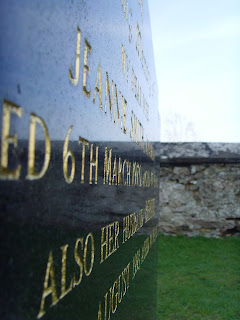Some photo's which I took of an old ancestral home. Was very interesting because most of the content is still lying there. It has become clear that the person living there must have walked out and shut the door.
What really fascinated me was the bulk of old newspapers and magazines. Some of the newspapers were from 1952. It was interesting to flick through them not only for the historical reference but also for the old advertisements of the the time.
The texture of the newspapers are so very different from the newspapers of today. The paper quality and ink print seemed to be better. The layout is more or less the same and the quantity of colour used in the print was less, mostly the advertisements had colour or the front page.
This photo is of the man who was the last person to live in this particular house. He left behind a wealth of old items such as the newspapers and magazines as well as everyday items of his time! I also managed to get the census records for the people who occupied the house in 1901 & 1911.
Graffiti pictures taken around the town!
Street art or not?
Headstone rubbings
Gravestones
Looking at the type but also came across the reflections on the stones.
Christogram?
When I was taking photographs of the headstones I noticed some carvings which seemed strange to me. I hadn’t seen them before on any stones but I was curious to know what they meant.
The First IHS
Western Christianity
In the Latin-speaking Christianity of medieval Western Europe (and so among Catholics and many Protestants today), the most common Christogram is "IHS" or "IHC", denoting the first three letters of the Greek name of Jesus, iota-eta-sigma, or ΙΗΣ. The Greek letter iota is represented by I, and the eta by H, while the Greek letter sigma is either in its lunate form, represented by C, or its final form, represented by S. Because the Latin-alphabet letters I and J were not systematically distinguished until the 17th century, "JHS" and "JHC" are equivalent to "IHS" and "IHC".
"IHS" is sometimes interpreted as meaning Iesus Hominum Salvator ("Jesus, Savior of men" in Latin) or connected with In Hoc Signo. Such interpretations are known as backronyms.
Uncle Sam
Took this picture by mistake but it puts me in mind of the uncle sam posters!
Steve Pyke Steve Pyke an English photographer was drawn to explore the human face and his portaits record every texture, wrinkle, hair and blemish. They also capture something unique to that individual: their story. The human face signals our emotions and suggests our cultural background
Paolo Pellegrin
Italian photojournalist Paolo Pellegrin reportage lies within the humanistic tradition established by Henri Cartier-Bresson and Robert Capa. Although he uses digital equipment, his images have the same classic black and white appearance as their earlier generation of photojournalists
David Creedon
An Irishman David Creedon, uses the documentary genre (Ghosts of the Faithful Departed) to give a window on the past. 'I wanted to investigate not only an individual family's history but the story of a generation' he says. The project consists of images of a number of derelict houses in rural Ireland; theyy were abandoned as a consequence of the large -scale emigration during the economic depression of the 1950's & 60's.
This theme is simular to my images of the abandoned house at the Oldtown.
Sebastiao Salgado/Mali
“It is one thing to photograph people. It is another to make others care about them by revealing the core of their humanness.”
Paul Strand quotes (American Photographer, 1890-1976)
Selim Gunes / photographer
“Simply look with perceptive eyes at the world about you, and trust to your own reactions and convictions. Ask yourself: "Does this subject move me to feel, think and dream? Can I visualize a print - my own personal statement of what I feel and want to convey - from the subject before me?”
Ansel Adams quotes
Muammer Yanmaz
“Photography for me is not looking, it's feeling. If you can't feel what you're looking at, then you're never going to get others to feel anything when they look at your pictures.”
Don McCullin
Pictures taken at Dunlewy
Original pictures taken.
I combined pictures which I had taken and combined them with the letters wrote. The image reflect the content of the letters where the person showed a stillness in life and faith. The Pictures were taken at Dunlewy and Dunree fort.
Using photoshop I combined old hand writen letters with the photograph.
Picture taken that could be incorporated into a video. Taken from Errigal Mountain Co Donegal Nov 2010
Reflections
Photographs which I have taken keeping within the theme of reflection.
Pictures taken





























































